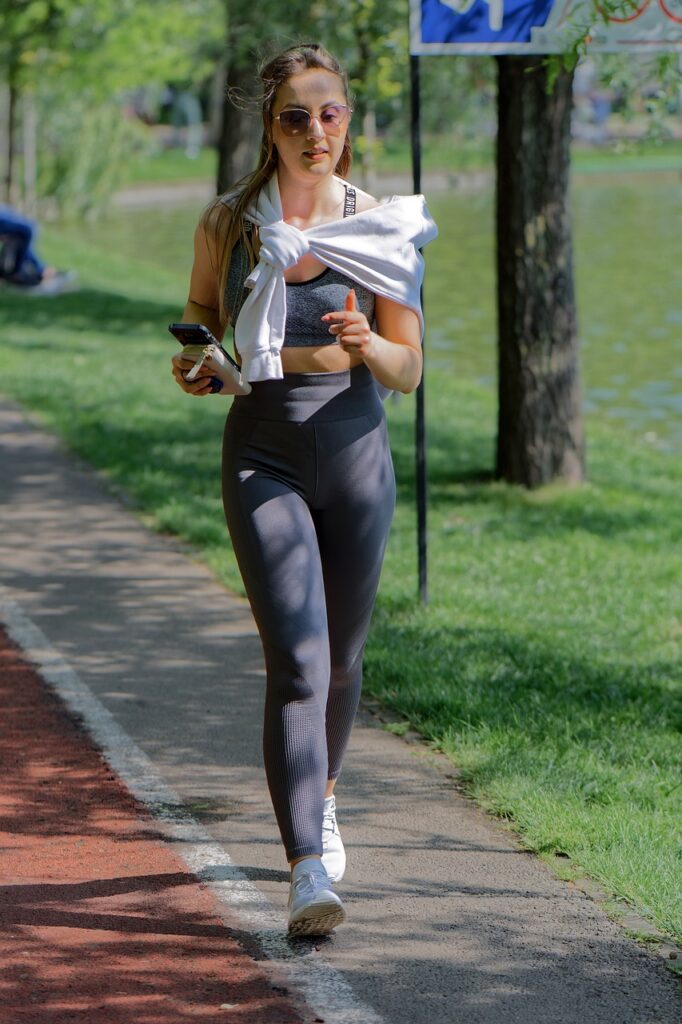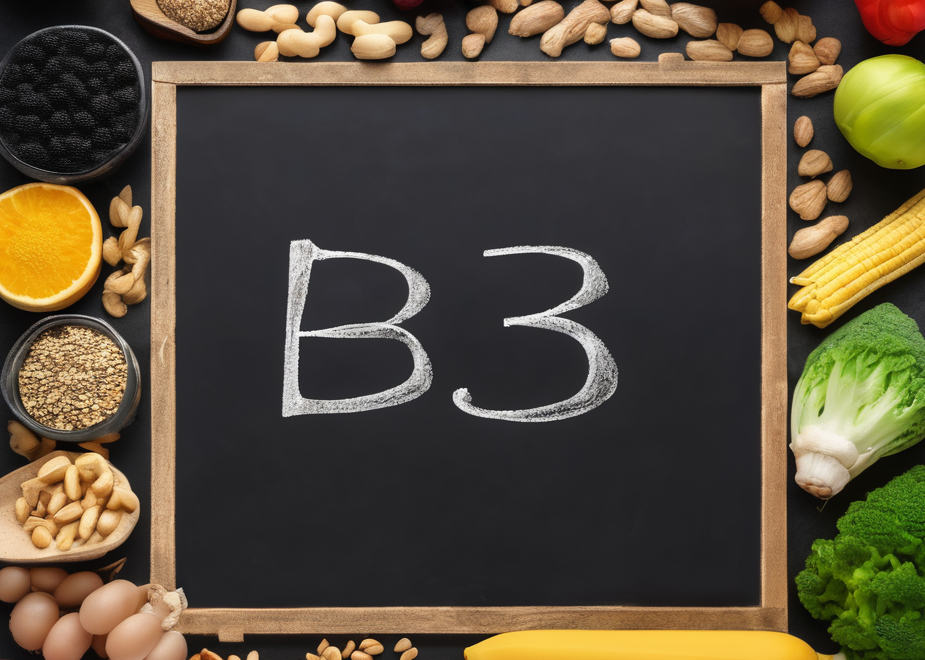JUMP TO…
What Does Vitamin B3 Niacin Do for the Body?
What Else is Vitamin B3 [niacin] Best For?
How Much Niacin B3 Do You Need Each Day?
Top 15 Niacin-Rich Foods
Vegetarian Niacin-Rich Foods
What are the Symptoms of B3 Deficiency?
Is Too Much Niacin Bad?
What is Niacin Flush & Why Does it Happen?
Will 500 mg of Niacin Cause Flushing? Is It Bad?
What is Flush Free Niacin?
Example Meals High in Niacin
8 minute read
What Does Vitamin B3 Niacin Do for the Body?
Vitamin B3, also known as niacin, is essential for maintaining overall health. Here are the key benefits of niacin and what it is best for:
Energy Production
Niacin helps convert food into energy, supporting metabolism and providing fuel for bodily functions. It plays a crucial role in converting food into energy by acting as a precursor to the coenzymes NAD (nicotinamide adenine dinucleotide) and NADP (nicotinamide adenine dinucleotide phosphate).
These coenzymes are essential for redox reactions in cellular metabolism, facilitating the transfer of electrons and the production of ATP, the cell’s primary energy currency. This process supports overall energy production and efficient functioning of the body’s metabolic pathways.
Cardiovascular Health
It improves circulation and reduces bad cholesterol (LDL) while increasing good cholesterol (HDL), making it beneficial for heart health.
Skin and Digestive Health
Niacin supports the health of the skin and digestive system, promoting healthy skin and efficient digestion.
Nervous System Support
It plays a role in maintaining a healthy nervous system, contributing to nerve function and overall brain health.
So, what is vitamin B3 best for? Primarily, it’s known for its role in energy production, cardiovascular health, and supporting skin, digestion, and the nervous system.
What Else is Vitamin B3 [niacin] Best For?
Niacin Benefits for Hair
Niacin promotes blood circulation to the scalp, which can help improve hair health and growth. By ensuring that hair follicles receive adequate nutrients and oxygen, niacin contributes to thicker, stronger hair. It is often included in hair care products and supplements for its potential to enhance hair vitality and combat hair loss.
Niacin Pre-Workout Benefits
Taking niacin before a workout can improve blood flow and energy levels, enhancing physical performance. The increased circulation helps deliver oxygen and nutrients to muscles more efficiently, which can improve endurance and strength during exercise.
How Much Niacin B3 Do You Need Each Day?
The recommended daily intake of niacin varies by age and gender.
Adult men generally need about 16 mg per day, while adult women require 14 mg per day.
Pregnant and breastfeeding women may need slightly higher amounts to support their increased nutritional needs.
Top 15 Niacin-Rich Foods

Lean meats, such as chicken breast, turkey, beef, and fish, are particularly rich in niacin, often containing significantly higher amounts per serving than plant-based sources. Here is a list of the top 15 niacin-rich foods.
- Chicken Breast: 14.8 mg per 3 oz (cooked)
- Turkey Breast: 10 mg per 3 oz (cooked)
- Tuna (Yellowfin): 18.8 mg per 3 oz (cooked)
- Salmon: 8.6 mg per 3 oz (cooked)
- Beef (Lean Cuts): 9.0 mg per 3 oz (cooked)
- Pork (Lean Cuts): 8.0 mg per 3 oz (cooked)
- Liver (Beef): 13.2 mg per 3 oz (cooked)
- Anchovies: 19.9 mg per 3 oz (cooked)
- Peanuts: 4.2 mg per 1 oz
- Brown Rice: 5.2 mg per cup (cooked)
- Mushrooms (Portobello): 7.6 mg per cup (cooked)
- Green Peas: 3.0 mg per cup (cooked)
- Sunflower Seeds: 2.0 mg per 1 oz
- Avocado: 3.5 mg per medium avocado
- Fortified Breakfast Cereals: 20-27 mg per serving (varies by brand)
Vegetarian Niacin-Rich Foods
Vegetarians may experience lower levels of niacin because plant-based sources generally contain less niacin compared to meat, making it important for them to include niacin-rich foods. To avoid niacin deficiency, vegetarians & vegans should consider including the foods below in their diet to ensure adequate amounts of niacin are being consumed each day.
- Peanuts: 4.2 mg per 1 oz
- Brown Rice: 5.2 mg per cup (cooked)
- Portobello Mushrooms: 7.6 mg per cup (cooked)
- Green Peas: 3.0 mg per cup (cooked)
- Sunflower Seeds: 2.0 mg per 1 oz
- Avocado: 3.5 mg per medium avocado
- Fortified Breakfast Cereals: 20-27 mg per serving (varies by brand)
- Potatoes (Baked with skin): 3.2 mg per medium potato
- Lentils: 2.1 mg per cup (cooked)
- Quinoa: 2.6 mg per cup (cooked)
- Barley: 2.0 mg per cup (cooked)
- Pumpkin Seeds: 1.3 mg per 1 oz
- Almonds: 1.0 mg per 1 oz
- Sweet Corn: 1.9 mg per cup (cooked)
- Whole Wheat Bread: 2.0 mg per slice (varies by brand)
What are the Symptoms of B3 Deficiency?
A deficiency in vitamin B3 can lead to pellagra, which is characterized by symptoms such as dermatitis, diarrhea, and dementia. Early signs of deficiency may include fatigue, depression, and digestive issues.
Other symptoms of niacin deficiency include:
- Dermatitis: Rough, red, or scaly skin rashes, particularly on areas exposed to sunlight.
- Diarrhea: Frequent, watery bowel movements, which can lead to dehydration and nutrient deficiencies.
- Dementia: Memory loss, confusion, disorientation, and other cognitive impairments.
- Inflammation of the Mouth and Tongue: Sores, swelling, and a bright red tongue.
- Digestive Issues: Indigestion, nausea, vomiting, and abdominal pain.
- Fatigue: Persistent tiredness and weakness.
- Headaches: Frequent and severe headaches.
- Depression: Mood swings, anxiety, and feelings of hopelessness.
- Glossitis: Swelling and soreness of the tongue.
- Anorexia: Loss of appetite leading to weight loss.
Without adequate niacin, the body struggles to perform vital metabolic functions, leading to these adverse health effects.
If untreated, severe niacin deficiency can lead to serious complications and can be life-threatening. It is important to address these symptoms early with dietary adjustments or supplementation under medical guidance.
Is Too Much Niacin Bad?
While niacin is essential for health, excessive intake can lead to adverse effects. High doses of niacin can cause symptoms such as nausea, vomiting, and liver toxicity.
Additionally it can cause temporary flushing.
What is Niacin Flush & Why Does it Happen?
Niacin flush is a temporary redness and warmth in the skin caused by the dilation of blood vessels.
This can be uncomfortable but is generally harmless.
To prevent niacin flush, start with a lower dose and gradually increase it. Taking niacin with food and opting for time-release formulations can also help minimize flushing. Drinking plenty of water and avoiding hot beverages immediately after taking niacin can further reduce the likelihood of experiencing a flush.
Will 500 mg of Niacin Cause Flushing? Is It Bad?
Yes, taking 500 mg of niacin is likely to cause flushing in many individuals. While not dangerous, it can be unpleasant and may deter people from continuing niacin supplementation.
What is Flush Free Niacin?
Flush-free niacin is a form of niacin that does not cause the common side effect known as niacin flush.
Example Meals High in Niacin
Breakfast
- Oatmeal with Sliced Bananas and Almonds
- Oatmeal: 1 cup cooked (1.0 mg)
- Bananas: 1 medium (0.8 mg)
- Almonds: 1 oz (1.0 mg)
- Total: 2.8 mg of niacin
- Fortified Breakfast Cereal with Milk and Fresh Berries
- Fortified Cereal: 1 serving (20 mg, varies by brand)
- Milk: 1 cup (0.2 mg)
- Fresh Berries: 1 cup (0.5 mg)
- Total: 20.7 mg of niacin
Lunch
- Quinoa Salad with Avocado, Black Beans, and Corn
- Quinoa: 1 cup cooked (2.6 mg)
- Avocado: 1 medium (3.5 mg)
- Black Beans: 1 cup (0.9 mg)
- Corn: 1 cup (1.9 mg)
- Total: 8.9 mg of niacin
- Chicken and Brown Rice Bowl
- Chicken Breast: 3 oz cooked (14.8 mg)
- Brown Rice: 1 cup cooked (5.2 mg)
- Steamed Broccoli: 1 cup (0.5 mg)
- Total: 20.5 mg of niacin
Dinner
- Grilled Salmon with Asparagus and Sweet Potatoes
- Salmon: 3 oz cooked (8.6 mg)
- Asparagus: 1 cup cooked (0.7 mg)
- Sweet Potatoes: 1 cup baked (1.4 mg)
- Total: 10.7 mg of niacin
- Beef Stir-Fry with Mixed Vegetables and Brown Rice
- Lean Beef: 3 oz cooked (9.0 mg)
- Mixed Vegetables: 1 cup (0.9 mg)
- Brown Rice: 1 cup cooked (5.2 mg)
- Total: 15.1 mg of niacin
Snacks
- Peanut Butter on Whole Wheat Toast
- Peanut Butter: 2 tbsp (2.4 mg)
- Whole Wheat Toast: 1 slice (2.0 mg)
- Total: 4.4 mg of niacin
- Sunflower Seeds
- Sunflower Seeds: 1 oz (2.0 mg)


